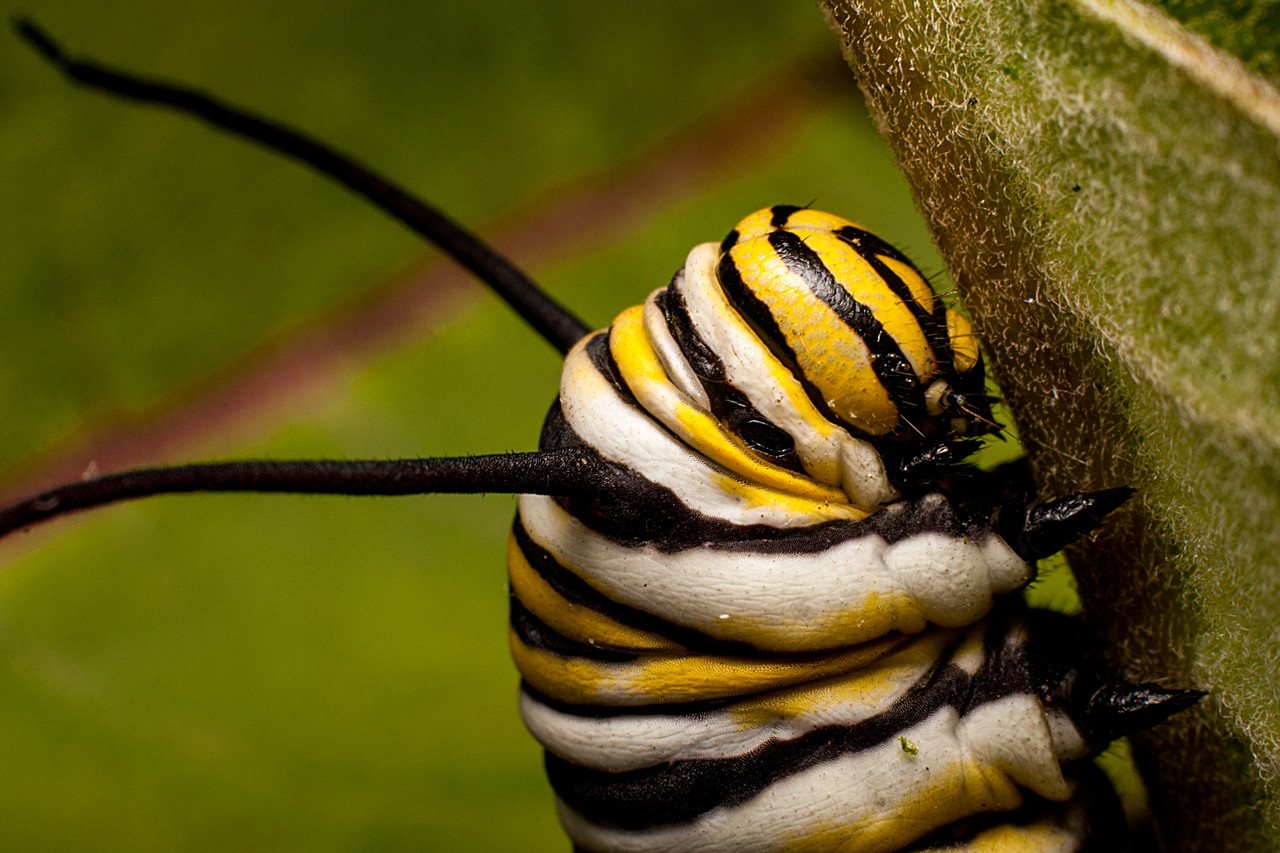HOME | DD
 Justin-Disgusting — Lines and Stripes
Justin-Disgusting — Lines and Stripes

#bugs #insects #macro #nature #monarchbutterfly
Published: 2016-08-07 16:56:30 +0000 UTC; Views: 466; Favourites: 18; Downloads: 0
Redirect to original
Description
About this insect:Here is a Monarch Butterfly Caterpillar on a milkweed plant. This seems to be the right time of year to spot these caterpillars; I spotted three of them the day I took this photo (August 5th). It is fascinating to think that this creature will soon be completely transformed and then on its way on a massive migration.
About this shot:
I like lines this photo has. I also like seeing the texture of the caterpillar's skin. I tried to have a leaf in the background to avoid the "blackground" that I usually get from using a flash.
Related content
Comments: 14

May I ask with lens did you use? Did you use extension rings?
👍: 0 ⏩: 1

Sure; I love talking about gear!
If you want a super in-depth explanation of my gear and technique, check out this interview I took part in.
TL;DR: the lens is a cheap nifty fifty with extension tubes.
👍: 0 ⏩: 1

It's a very interesting interview
Currenty I'm experimenting with the transition from close-up to macro shots. I bought a set of extension tubes ( 13mm/21mm/31mm) and combine them with my Canon 50mm or 55-250mm lens. I'm not sure if it makes sense to stack 2 or 3 of these extension tubes? In general, I'm very happy with the magnification but in contrast (not surprisingly) unhappy with the big amount of light which is lost using this setup. That forces me to use low f's which lead to an even smaller zone of focus . I think now it's time to consider using flashlight
👍: 0 ⏩: 1

You can definitely stack the tubes. I, too, have a 13mm/21mm/31mm set of extension tubes, and what I typically do is use the 13mm and 31mm together. This will bring the magnification to approximately 1:1 with the 50mm lens and a crop-sensor. I find 1:1 magnification to be a sweet spot with arthropods. As a bonus, because most of my shots are taken at 1:1 magnification, it gives me a way to approximate the size of the subject with a small amount of math.
When I encounter a jumping spider, I will usually do a "spider drill" (see description of Fuzzy Wuzzy ) and add the remaining 21mm extension tube -- thus using all the tubes at once. Although, sometimes the subject is really big , and requires me to remove some tubes.
I will second the notion that it is time to consider using a flash for macro 
Once you get a flash, however, there will be a whole other set of hurdles to overcome...
The first macro shot you will take with a flash will most likely result in an image that is underexposed in the bottom half. The subject has to be so close for macro that the subject will probably be in the shadow created by the lens. The upper part of the image that is not under-exposed will probably look harsh and blown out. You will have to tame the flash, and a diffuser will solve these two problems. I am a huge advocate of making your own diffuser because it is a heck of a lot cheaper and you can customize it. My current diffuser is made out of like $3 USD worth of materials that I bought at an average craft store. At one point in time, I was using a 48oz Burger King cup for a diffuser. The real key for macro photography is the lighting, and having a custom diffuser can provide a unique style to your photos. For example, one can easily pick out a Colin Hutton macro from an anonymous line-up of macro shots simply from his lighting. I would love to know what his diffuser/flash setup is like, but I also wouldn't want to copy it because I would prefer to have my own unique voice.
A word of caution: I have only just started on my macro journey, so I am by no means an expert... Hopefully, I am giving you good advice
Good Luck!
👍: 0 ⏩: 2

Here's some first try. It's very hard to handly the small depth of field when the bugs don't keep still
👍: 0 ⏩: 1

Hey, nice photo! I love that you captured that precious moment just before flight.
I find weevils to be tricky subjects because of how shy they are.
Looks like you used an aperture of f9 (from the meta-data).
The depth of field can be increased slightly if you had some more light (via a flash perhaps) to reach f14 or f16.
You are totally right: the razor thin DOF of macro definitely introduces some challenges, especially with moving subjects.
Aside from the diffuser, I haven't altered my macro setup since I found an ISO/exposure time/f-stop that was workable.
Nearly all the effort I put into macro has been in regards to overcoming the challenges presented by the moving subjects!
Thank you for sharing your progress!
Keep up the good work!
👍: 0 ⏩: 0

Thank you for your detailed answer!
Your information helps me a lot. Hopefully the weather will be better at the weekend. Then I have to go out and exerimentate a bit with different settings
👍: 0 ⏩: 0

Awesome capture! Love the details of the skin texture!
👍: 0 ⏩: 1

great skin detail! Like most smooth things it seems quite textured when you get right in there.. made me say 'awwww wow'
👍: 0 ⏩: 0























